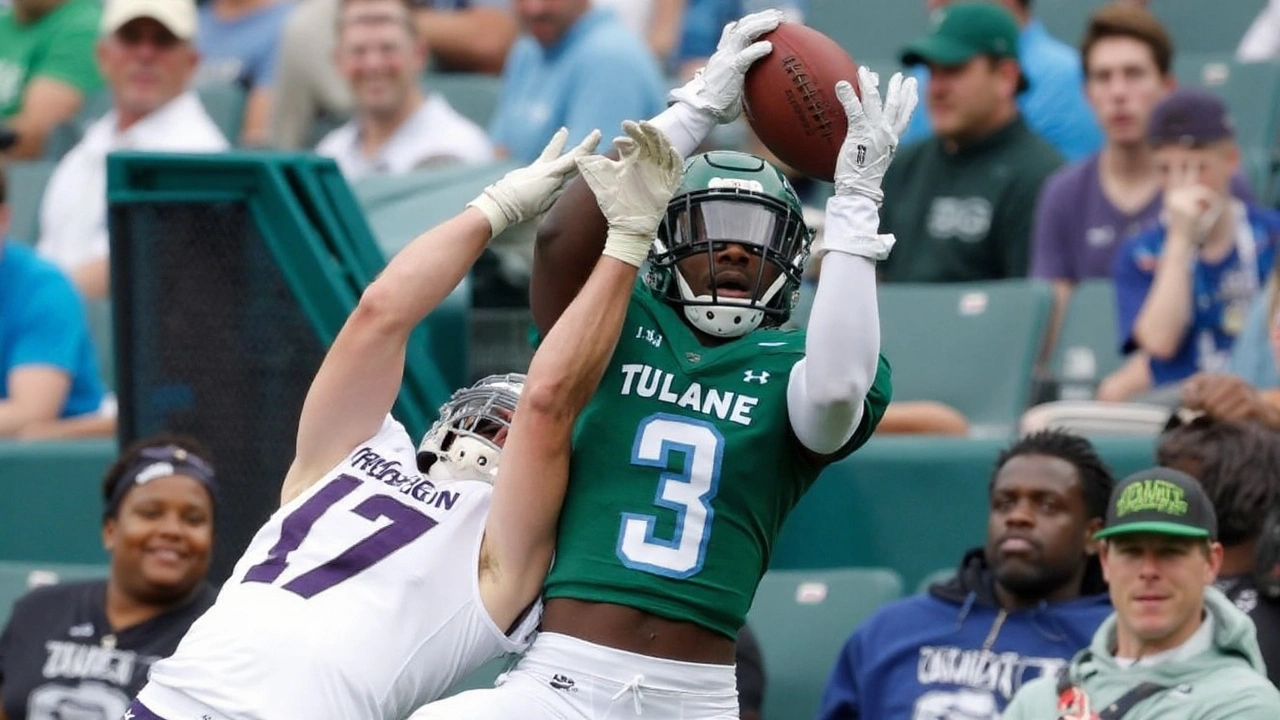Four top-10 teams went down in one weekend, and just like that, the sport’s map looks different. Florida State dropped Alabama 31–17 in Tallahassee. Ohio State muscled past previously top-ranked Texas 14–7. LSU clipped Clemson 17–10. Miami stunned Notre Dame in South Bend. The ripple effect: every major outlet ripped up its bracket, moved the Buckeyes to the top line, and started reshuffling bowl boards before the leaves even turn.
This all lands in a season with a revamped postseason. The new 12-team setup keeps automatic berths for conference champions (including a guaranteed spot for the highest-ranked champion from the Group of Five), but strips away automatic first-round byes for champs. Seeding is now straight by ranking. Seeds 5–8 host first-round games on campus, a December twist that will reward depth, travel readiness, and tough weather teams as much as star power.
What Week 1 changed in the CFP picture
ESPN’s Kyle Bonagura and Mark Schlabach tore down their original bracket and bumped Ohio State to the No. 1 seed after the Buckeyes’ defensive statement against Texas. In multiple updated projections, Ohio State is now paced to reach Hard Rock Stadium in Miami—the site of this season’s title game—where they’d try to defend last year’s crown. Depending on whose forecast you read, their most likely final opponent is Penn State or LSU, both riding early goodwill after steady Week 1 wins.
Florida State’s upset of No. 8 Alabama might be the single-most disruptive piece on the board. An unranked team beating a top-10 SEC power in Week 1 instantly bumps FSU from bowl fringe to at-large conversation. Alabama, meanwhile, doesn’t drop out of bowl plans, but its path to a protected seed gets narrower. It’s one thing to recover from a September loss; it’s another in a format that punishes early slips by dropping teams into road games on campus in round one.
LSU’s 17–10 win over Clemson nudged the Tigers into a first-round home-game range in many projections. Clemson, now staring at an ACC chase from behind, has to fix its offense fast to avoid getting boxed into an 8–12 seed range. That’s survivable, but it likely means a cold-weather trip or hostile campus environment right out of the gate.
Miami’s road win at No. 6 Notre Dame is the kind of resume line that holds value for months. The Irish erased a 10-point hole to tie it late but couldn’t land the final punch, and some outlets still slot them as a No. 5 seed based on overall profile and ceiling. Others push them closer to the 6–8 band. Either way, the margin for error shrinks with trips to unfriendly venues looming for anyone outside the top four.
Then there’s the Group of Five race. Tulane made the cleanest early case with a 23–3 takedown of Northwestern under Jon Sumrall. Boise State’s wobble—an opening loss to South Florida—puts the Broncos in chase mode. Navy is still a live American contender after Week 1, but Tulane’s Power Four scalp gives it a head start. Under this year’s rules, five conference champions are projected to claim automatic spots, and the highest-ranked Group of Five champ is in the field; after one week, the Green Wave own the inside lane.
CBS Sports goes as far as placing Tulane at No. 12 against No. 5 Notre Dame in round one. In that scenario, the Irish would get a campus game despite the loss in South Bend, while Tulane carries the banner for the non-power leagues. It’s a tough draw for a G5 champion, but it’s also a shot at history—win once, and you earn a neutral-site quarterfinal with national oxygen.
Other early first-round pairings floating across projections include LSU vs. Arizona State and Utah vs. South Carolina, with Oregon, Penn State, and Georgia rotating through seeds depending on how each outlet values Week 1 tape versus preseason belief. Remember, seeds 5–8 host, so there’s real incentive for contenders to climb into that band and avoid a December road trip to places like Columbus, Eugene, or State College.
If you’re tracking how this format changes behavior, note the home-site effect. A 6-seed with a campus game may be better positioned than a 4-seed flying into a loaded neutral-site quarterfinal. Depth matters. Quarterback health matters. So do special teams and short-yardage consistency in bad weather. That’s why the early movers—teams that showed they can win ugly—are getting the most respect today.

How the bowls stack up after the shake-up
Beyond the College Football Playoff, the bowl board already has a familiar look with a few fresh twists. The Cotton Bowl is popping up as Oregon vs. South Carolina in several forecasts, a strength-on-strength pairing with speed everywhere. The Orange Bowl could bring Clemson vs. Georgia, a regional heavyweight bout that doubles as a referendum on how quickly Clemson can stabilize offensively. The Sugar Bowl in multiple projections features Texas vs. Penn State, a classic styles clash: finesse and explosives versus blunt-force defense.
Mid-tier bowls are filling in too. The Armed Forces Bowl could land Army vs. TCU—a service-academy brand draw against Big 12 muscle. The Holiday Bowl has early buzz for SMU vs. Washington, a chess match of quarterbacks and tempo. Alabama, Ole Miss, USC, Indiana, and Iowa State are sprinkled across various pairings despite the opening-week turbulence, a reminder that one result doesn’t erase recruiting depth or experienced coordinators.
Week 1 also nudged the conference narratives. The Big Ten took the early victory lap with Ohio State’s statement and steady openers elsewhere. The SEC absorbed a few headline dents, but depth keeps its floor high, and there’s plenty of runway before selection day. The ACC’s split decision—Miami up, Clemson down—sets up a seasonal tug-of-war for league supremacy and seeding leverage. The Big 12 and the western powers have playable paths, but their top brands need clean September runs to climb into protected seeding.
What moves the needle from here? Three things: clean nonconference wins, road toughness, and quarterback stability. Teams that answer those questions by early October tend to grab the top-four seeds and avoid a first-round home date. Slip twice, and you’re staring at a campus game in a winter stadium with a season’s worth of hopes on the line.
It’s only Week 1, but we’ve already got a working bracket, a pecking order, and a handful of hinge teams. Ohio State owns the driver’s seat today. Tulane has the G5 flag for now. Alabama, Clemson, Texas, and Notre Dame still control plenty if they stack wins. Expect weekly reshuffles as injuries, weather, and road trips expose true depth charts—and as home-site playoff games rewrite what it means to be seeded fifth instead of fourth.
